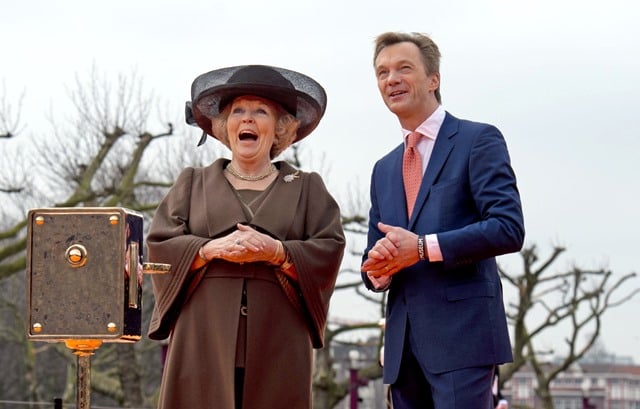
Photo: Robin Utrecht/AFP/Getty Images.
Wim Pijbes, director of the Rijksmuseum in Amsterdam for seven and a half years, is leaving to head up Voorlinden, a new private museum and nature reserve in Wassenaar, a tony suburb of the Hague. He’ll start his new job in July, and the museum, dedicated to contemporary art and now under construction, is scheduled to open in September.
Voorlinden will display the collection of chemical industry magnate Joop van Caldenborgh, whose personal holdings include works by Richard Artschwager, Sylvie Fleury, Dan Graham, Henry Moore, Tom Otterness, and Giuseppe Penone. The museum is adjacent to his home, and the 40-hectare grounds will display a James Turrell “Skyspace” and a steel sculpture by Richard Serra.
The unusual move—a half-dozen experts on the subject, surveyed by artnet News, said they could think of no similar instance—comes as the number of private museums grows worldwide, now topping 300, which even outnumbers art fairs, of which the Art Newspaper’s 2015 fair calendar lists 269. What’s more, more than two-thirds of them were founded in the last fifteen years, fully half of them between 2000 and 2010, according to a recent report by Larry’s List.
A 2015 article in the New York Times pointed out that the lack of curators at these institutions, and their proximity to their founders’ homes, suggest that the founding collectors haven’t really relinquished control to a public institution, though they generally get the tax benefits of an actual donation to a nonprofit.
The first temporary exhibition at the new museum, designed by Dutch architecture firm KraaijVanger, will be devoted to Ellsworth Kelly, and the museum’s collection includes works by Ai Weiwei, Rineke Dijkstra, Tracey Emin, Damien Hirst, Anselm Kiefer, Yayoi Kusama, and Henri Matisse.
Pijbes, 55, took the reins at the Rijksmuseum in July 2008, and during his time at the helm he oversaw the reopening of the museum after a dramatic renovation that necessitated a decade-long closure. The overhaul, by Spanish architectural firm Cruz y Ortiz, cost some €375 million ($406.7 million at current exchange rates) and was plagued by delays.
“The building is now open and thanks to our internationally renowned website the collection is visible to all,” Pijbes said in a press release.
The Rijksmuseum reopened to plaudits including the European Museums Forum’s 2015 European Museum of the Year designation. “This is a great museum, at the height of its powers, providing a rich experience to the public, and a socially aware outreach program for visitors of all ages,” the Forum said. Visitor numbers doubled to 2.4 million in 2015, according to the museum.
“With his relentless energy and motivation, Wim Pijbes has played a crucial role to reshape the Rijksmuseum to what it actually is: a world class institution of art and history,” said Jaap de Hoop Scheffer, chairman of the museum’s board, in a statement.